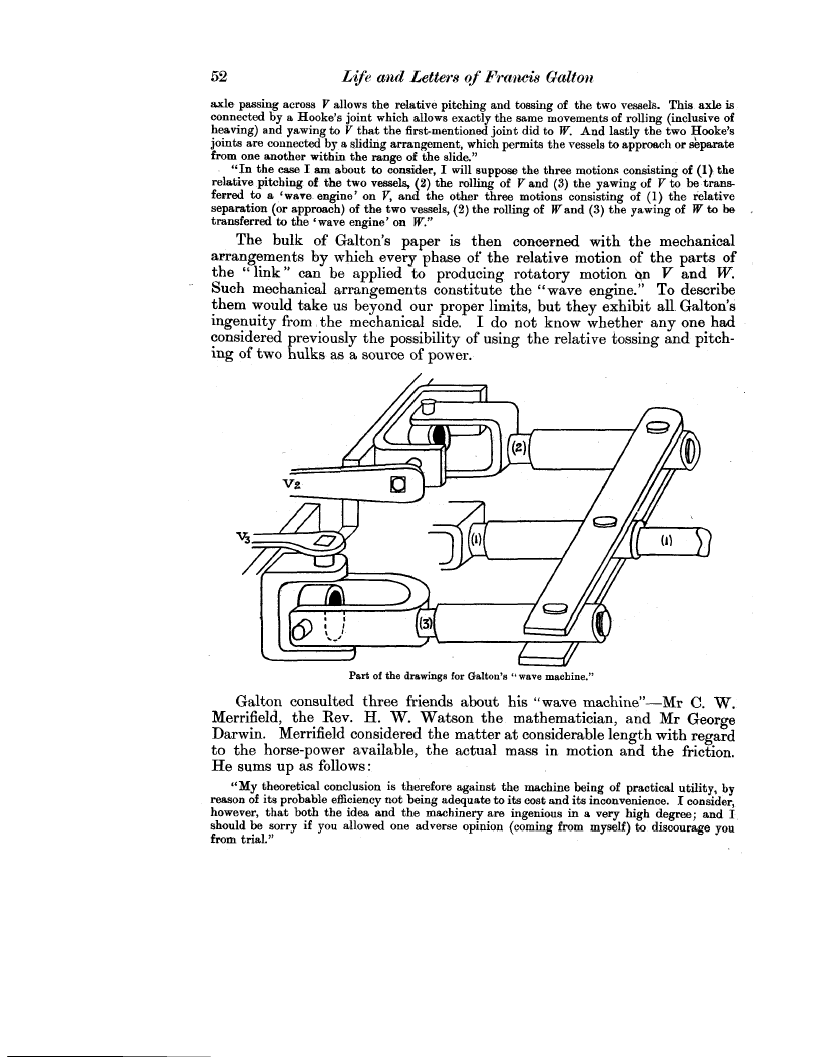52 Life and Letters of Francis Galton
axle passing across V allows the relative pitching and tossing of the two vessels. This axle is connected by a Hooke's joint which allows exactly the same movements of rolling (inclusive of heaving) and yawing to V that the first-mentioned joint did to W. And lastly the two Hooke's joints are connected by a sliding arrangement, which permits the vessels to approach or separate from one another within the range of the slide."
"In the case I am about to consider, I will suppose the three motions consisting of (1) the relative pitching of the two vessels, (2) the rolling of V and (3) the yawing of V to be transferred to a 'wave. engine' on V, and the other three motions consisting of (1) the relative separation (or approach) of the two vessels, (2) the rolling of Wand (3) the yawing of W to be transferred to the 'wave engine' on W."
The bulk of Galton's paper is then concerned with the mechanical arrangements by which every phase of the relative motion of the parts of the "link" can be applied to producing rotatory motion 0 V and W. Such mechanical arrangements constitute the "wave engine." To describe them would take us beyond our proper limits, but they exhibit all. Galton's ingenuity from the mechanical side. I do not know whether any one had considered previously the possibility of using the relative tossing and pitching of two hulks as a source of power.
Part of the drawings for Galton's "wave machine."
Galton consulted three friends about his "wave machine"-Mr C. W. Merrifield, the Rev. H. W. Watson the mathematician, and Mr George Darwin. Merrifield considered the matter at considerable length with regard to the horse-power available, the actual mass in motion and the friction. He sums up as follows
"My theoretical conclusion is therefore against the machine being of practical utility, by reason of its probable efficiency not being adequate to its cost and its inconvenience. I consider, however, that both the idea and the machinery are ingenious in a very high degree; and I should be sorry if you allowed one adverse opinion (coming from myself) to discourage you from trial."

